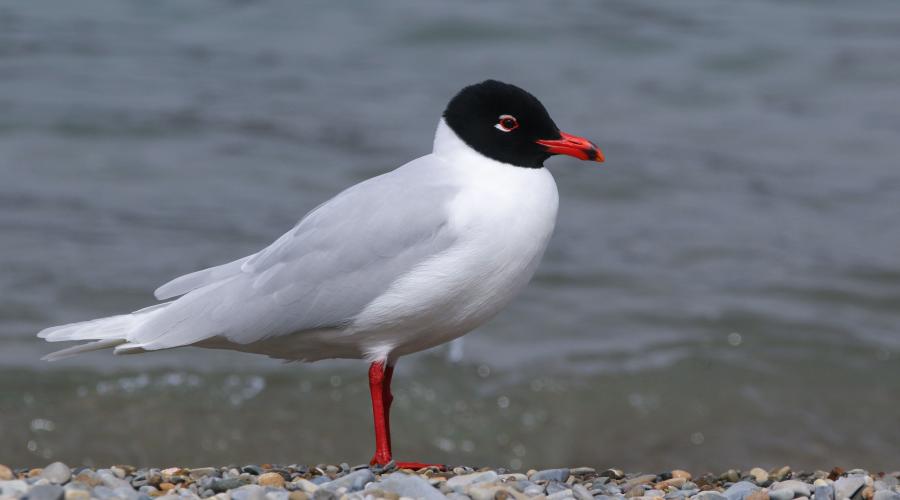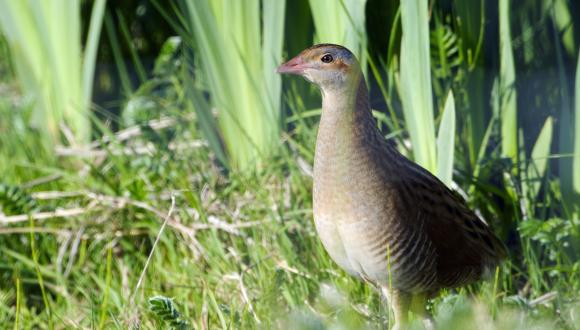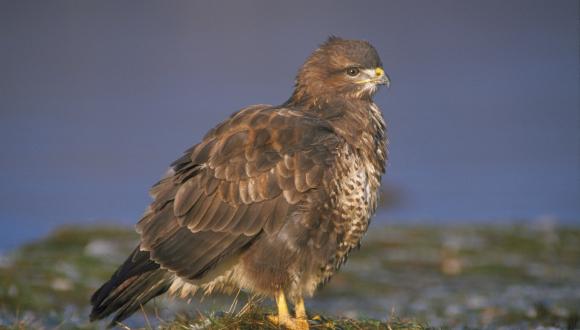
First breeding record at Forvie for rare UK gull
18 December 2023
Mediterranean gulls were confirmed as breeding at Forvie this year in what is thought to be the first-ever record for Scotland.
Two pairs successfully hatched chicks at the NatureScot National Nature Reserve in 2023 – although sadly none survived to fledge.
Mediterranean gulls were once a very rare sight in the UK but now breed in increasing numbers, mostly on the south and south-east coasts of England.
Their distribution has been expanding northwards, with several instances of single birds summering in Scottish gull colonies and pairing with both black-headed gull and common gull. However, it is thought that the Forvie gulls may be the first confirmed breeding record for the species for Scotland.
Daryl Short, Forvie Nature Reserve Officer, said: “While we have seen visiting Mediterranean gulls at Forvie before, we were very surprised to see two pairs of two-year-old birds settle in the black-headed gull colony this summer, with each pair successfully hatching chicks.
“Sadly, none of the chicks survived to fledge, which was likely due to food shortage because of the drought at the time. Earthworms are an important part of the diet of small gulls, and they would have been hard to find in those conditions. Also, with all four parent birds being quite young, they would have been inexperienced breeders, reducing their chances of success in a new environment.
“Despite the pairs not successfully fledging any chicks, this was still a really exciting development for Forvie as the species expands its breeding range northwards and we are looking forward to seeing what happens in 2024.”
The Seabirds Count (2015–2021) census reported that the Mediterranean gull began to colonise Britain in the 1980s, coinciding with a westward range expansion across Europe from the species' core Black Sea breeding population. This range expansion may have been due to changes in climate, creation of new wetland habitats, and better protection of colonies in western Europe.
This year was also a good one for the reserve’s black-headed gulls, with 2,428 pairs recorded and a minimum 1,353 fledged young, both new site records. This was especially heartening to see as the Seabird Count census results have shown that black-headed gulls have declined by 75% in Scotland since the last census, Seabird 2000 (1998–2002).
Eiders also had an excellent season, with around 100 nests and a minimum of 340 fledged young. The high duckling survival rate meant productivity for the species was the best since the year 2000.
Sadly, as reported in the summer, it was not such a good year for the breeding tern colonies at Forvie as many succumbed to avian flu.
Worst affected were Sandwich tern with around 75% mortality among the chicks and fledglings, although adults were largely unaffected. Arctic terns suffered 18% mortality among the adults, a worrying development as these birds are long-lived and relatively slow to reproduce. Little terns, however, appeared to be unaffected by avian flu, and at least 11 fledged young from 11 nests which meant a good solid season for them.
Scotland’s avian flu task force, led by NatureScot, is continuing its work to assess and better understand the impact of avian flu and ensure we have positive measures in place to support the recovery of species impacted by the outbreak.





